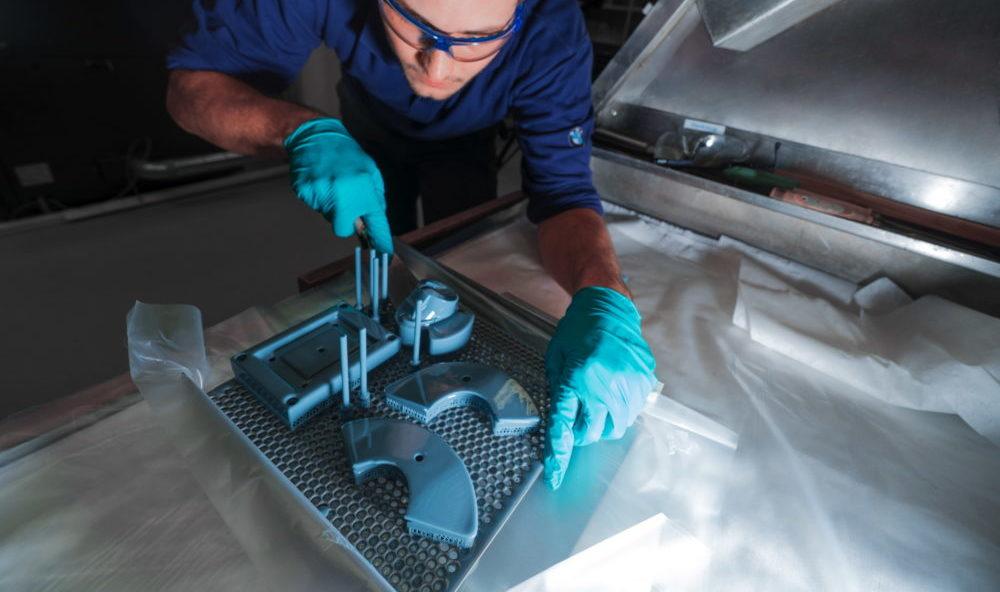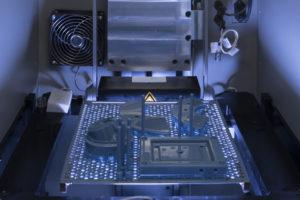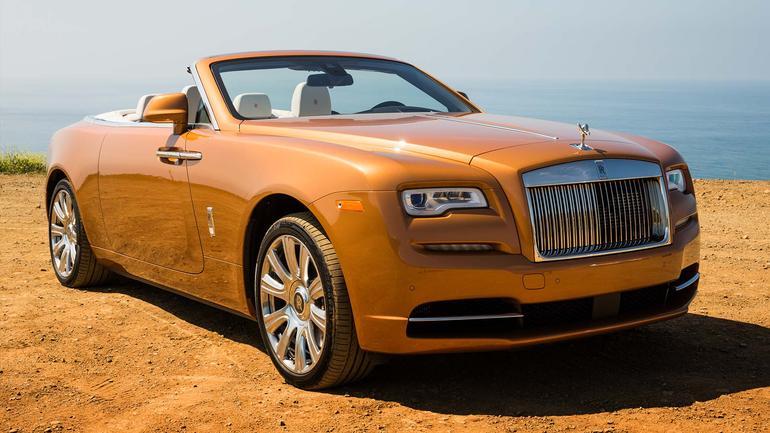The Rolls-Royce Phantom Now Has More Than 10,000 3D Printed Parts, BMW Looks to Expand Use Across Entire Line of Cars
 With more than 25 years of using 3D printing technology, there probably isn’t a global automotive manufacturer that has pushed the limits of using additive manufacturing applications than the BMW Group. For most of the quarter-century that they have been using 3D printing, it was primarily used in the production of prototypes or one-off custom parts. However BMW began using 3D printing technology to produce end-use parts in series production back in 2012 with their new Rolls-Royce Phantom. Over the next several years, more than 10,000 3D printed components would end up being used to manufacture each Phantom coupe that came off the assembly line. The switch from traditionally manufactured parts to 3D printed parts was so successful that BMW began incorporating them into the new Rolls-Royce Dawn this year.
With more than 25 years of using 3D printing technology, there probably isn’t a global automotive manufacturer that has pushed the limits of using additive manufacturing applications than the BMW Group. For most of the quarter-century that they have been using 3D printing, it was primarily used in the production of prototypes or one-off custom parts. However BMW began using 3D printing technology to produce end-use parts in series production back in 2012 with their new Rolls-Royce Phantom. Over the next several years, more than 10,000 3D printed components would end up being used to manufacture each Phantom coupe that came off the assembly line. The switch from traditionally manufactured parts to 3D printed parts was so successful that BMW began incorporating them into the new Rolls-Royce Dawn this year.
The BMW Group Additive Manufacturing Centre at their Research and Innovation Centre has committed itself to taking the most advanced 3D printing technologies available and finding ways to apply it in the production of their vehicles. With the Rolls-Royce Phantom, that included parts as varied as 3D printed hazard-warning light holders, center lock buttons, electronic parking brakes and sockets. This year’s model of the Rolls-Royce Dawn will be using 3D printed mounting brackets for wires, hoses and fiber-optic cables, and they expect to instal thousands of them throughout the production cycle. Rolls-Royce Motor Cars’ parent company BMW expects to begin rapidly expanding the use of advanced 3D printed parts across their entire range of vehicles.
“Additive technologies will be one of the main production methods of the future for the BMW Group, with promising potential. The integration of additively-manufactured components into Rolls-Royce series production is another important milestone for us on the road to using this method on a large-scale. By utilising new technologies, we will be able to shorten production times further in the future and increasingly exploit the potential of tool-less manufacturing methods,” said the BMW Groups head of Production Strategy, Technical Integration, Udo Hänle.
According to BMW, the advantages of using 3D printed parts became visible early on in the process, especially when it came to the production of components with complex geometries. They were able to manufacture parts significantly faster than using traditional production methods, and were able to do so while maintaining their high quality standards. In fact, many of the parts that were manufactured for the Phantom, and now the Dawn, were simply impossible to producing using conventional manufacturing technologies. As BMW starts to expand the use of additive manufacturing, they are focusing on cutting-edge planar 3D printing technologies.
“Planar technologies are central to the use of additive processes in series production. The most recent example can be found in the preliminary trials of the HP Multi Jet Fusion technology. The process will initially be used in prototyping, but we plan to extend it into series production over the long term,” explained the head of BMW Group’s Additive Manufacturing Centre, Jens Ertel.

Removing parts manufactured using planar 3D printing technology at the BMW Group Additive Manufacturing Centre. [Image: BMW]
Currently, the Additive Manufacturing Centre team manages more than 25,000 orders for 3D printed prototypes, and they manufacture more than 100,000 components for multiple divisions within the BMW Group each year. They also use 3D printing to produce custom manufacturing equipment and specialized tooling for vehicle assembly lines. They have also been using additive manufacturing to produce custom or short-run components since 2010 when they 3D printed a water pump wheel that is still used in their DTM silhouette racing cars. Depending on the application being used, the Additive Manufacturing Centre team typically is able to manufacture parts as varied as design samples, small plastic holders, metal chassis components and prototypes for functional testing in a matter of days. Discuss further over in the BMW Using 3D Printed Parts forum over at 3DPB.com.
Subscribe to Our Email Newsletter
Stay up-to-date on all the latest news from the 3D printing industry and receive information and offers from third party vendors.
You May Also Like
3D Printing News Briefs, April 13, 2024: Robotics, Orthotics, & Hypersonics
In 3D Printing News Briefs today, we’re focusing first on robotics, as Carnegie Mellon University’s new Robotics Innovation Center will house several community outreach programs, and Ugogo3D is now working...
Rail Giant Alstom Saves $15M with 3D Printing Automation Software 3D Spark
3D Spark has entered into a three-year deal with the rail giant Alstom. Alstom, a transport behemoth with annual revenues of $16 billion, specializes in the manufacture of trains, trams,...
Meltio Expands Global Reach with New Partnerships in the Americas and Europe
Spanish 3D printing manufacturer Meltio has expanded its sales network across the globe. With the addition of three new partners in the United States, Brazil, Argentina, and Italy, Meltio aims...
3D Printing Webinar and Event Roundup: April 7, 2024
Webinars and events in the 3D printing industry are picking back up this week! Sea-Air-Space is coming to Maryland, and SAE International is sponsoring a 3D Systems webinar about 3D...

































